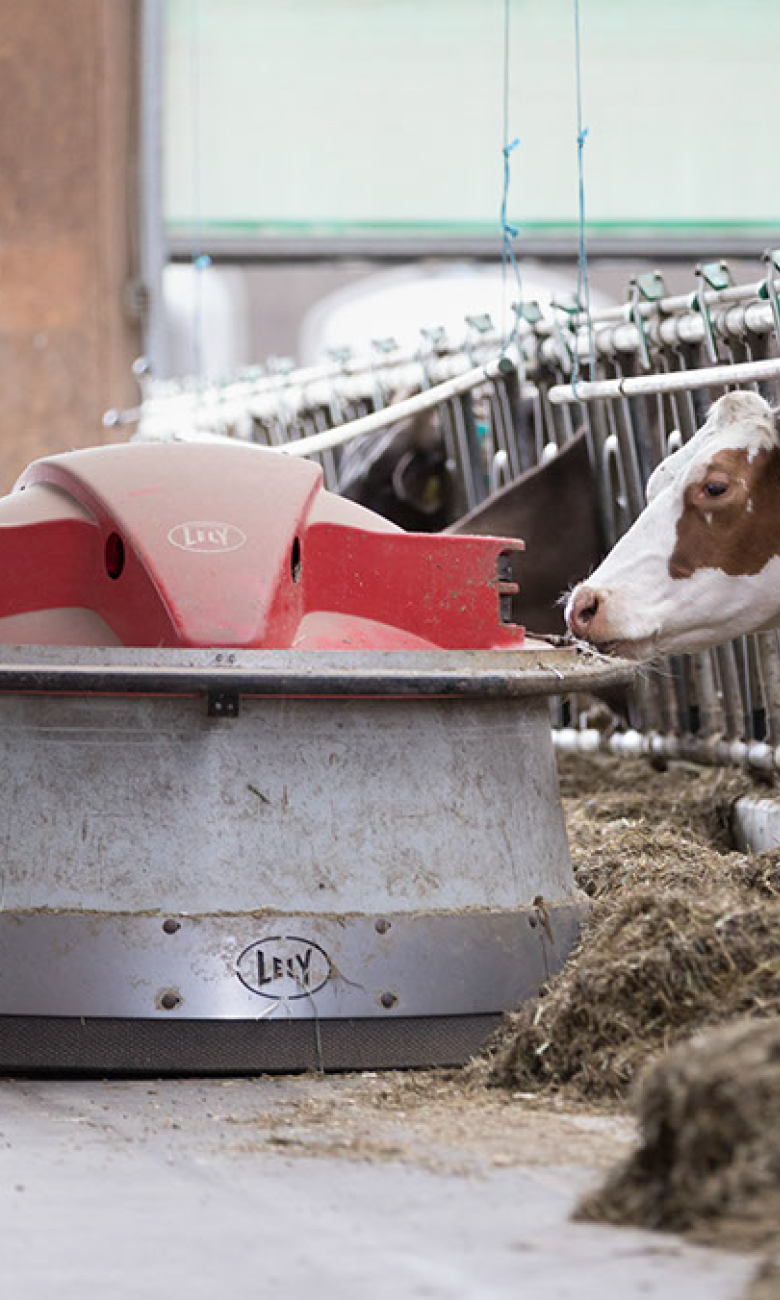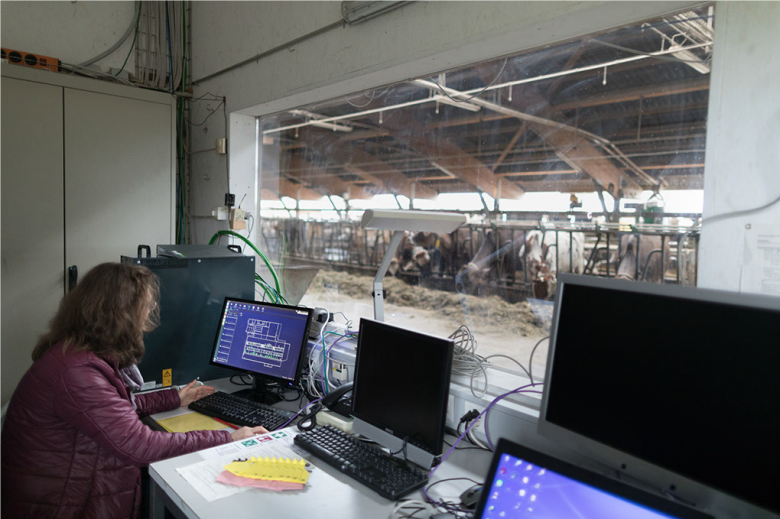Agriculture 4.0 - the Swiss Smart-Farming Revolution
Agriculture, as in other areas of economic life, is seeing its methods transformed by the development of ever more advanced technologies, methods that are now becoming known as smart farming.
All areas of farming are affected by new technologies: soil, water, crop and herd management, plant protection, animal health, mechanisation... Smart farming aims to make farms more efficient, optimise processes, increase yields and minimise their impact on the environment. This is a revolution with many advantages that Agroscope, the centre of competence of the Swiss Confederation for agricultural research, is studying with the aim of improving the competitiveness of Swiss farming.
But what is smart farming in Switzerland actually about?
The term ‘smart farming’ often conjures up the image of ultra-high performance robots working on huge farms surrounded by intensively cultivated land that disappears into the distance – an image far removed from Switzerland and its small farms, not to mention its mountain pastures.
But, according to Thomas Anken, head of the research group working on digital production at Agroscope: “Smart farming is also practised in Switzerland. If a new technique offers farmers real added value, it is also used on small farms.” The future of agriculture does not depend solely on the development of more powerful machines and robots, but also on systems of intelligent sensors that monitor precisely the relevant parameters and interpret their development. According to Anken: “All this new technology must in the future be able to give crops, plants and animals exactly what they need, when they need it.” Smart farming is therefore the promise of greater efficiency, fewer crop-protection agents, early detection of diseases in animals and better quality products, to cite just one argument.

Rumi-watch and Agrométéo: Agroscope experts put digitalisation to profitable use
What are smart-farming experts currently working on?
Agroscope is based on collaboration and invests in numerous projects in partnership with research institutes, universities and private companies, including start-ups. “Smart farming requires a lot of cooperation with the private sector, i.e. with both national and international companies,” Thomas Anken explains. One example is the Rumiwatch project, which involves collaboration between Vetsuisse of the University of Bern and the company Itin & Hoch: “Thanks to a halter and a pedometer, both fitted with sensors, it is possible to gather data over the long term on a cow’s behaviour, movements and feeding habits. These data are then analysed and interpreted by the Rumiwatch programme”. The longer-term aim of the researchers is to enable the programme to notify the farmer when an animal begins to behave abnormally. This would make it possible to respond to a sick animal more rapidly, and thus limit the use of antibiotics, which would be good both for the animal and would help in the fight against antibiotic resistance. Moreover, the data must also be able to find the best formula for improving high-quality Swiss products, such as its famous cheeses.

Another example is the Agrométéo web platform: monitoring the evolution of mildew, insect populations, the phenological development of wheat, etc, where all the information needed for plant protection is collected on a single site for farmers. The different applications serve to help decision-making for managing plant protection problems encountered in large-scale crops, viticulture and arboriculture. Pierre-Henri Dubuis, a scientist working in the fields of mycology and biotechnology puts it this way: “It’s a question of working in partnerships at the national level with the cantons and producers, as well as at the international level with research institutes. This is what we have been doing for more than ten years! Thanks to the pooling of meteorological data, research findings and observations, we have developed forecasting models and algorithms. This platform is a real working tool to help fight diseases and pests in crops more effectively.” Here too, technology enables us to limit the use of inputs while preserving the environment and keeping farmers’ costs under control.
Research therefore focuses intensively on the use of ‘big data’. Collected by intelligent objects provided with sensors and connected to each other, the data analysed by algorithms must ultimately facilitate the efficient use of resources, which are also optimally adapted for purpose. “The aim is that the data on a cow collected by a robotic milker, for example, enables the robot supplying the fodder to adapt the ration to the needs of the animal in question. All this thanks to algorithms, and no need for the farmer to intervene,” explains Christina Umstätter, head of the research group at Agroscope.
Smart farming or high-tech farmer?
These technologies are leading farmers to develop new skills in using numerous applications and applying the information generated by the available systems. This is not always easy for people who work on the land. Studies are under way at Agroscope to determine whether there is a psychological barrier, a kind of resistance on the part of farmers who may see in these technologies a clash with the very nature of their occupation. This matter is taken seriously by the research centre. Thomas Anken explains: “It is important always to keep in mind that technology must above all not put humans under stress. For example, if we develop an application, it has to have an interface that is as simple as possible.” The smart phone is also an important asset which the farmer can use as a working tool while moving around the farm. “The researchers are mindful to ensure that the devices work properly before putting them into service. Breakdowns inevitably raise farmers’ stress levels and negate the benefits of these technologies.”
New technologies are therefore introduced not only to revolutionise agriculture but the entire food chain. Nevertheless, smart farming is no substitute for farmers’ experience, feel for their work and professional training. The many advantages that technological developments offer therefore do not prevent the Agroscope researchers and their many partners from keeping people as the focal point of their concerns.





